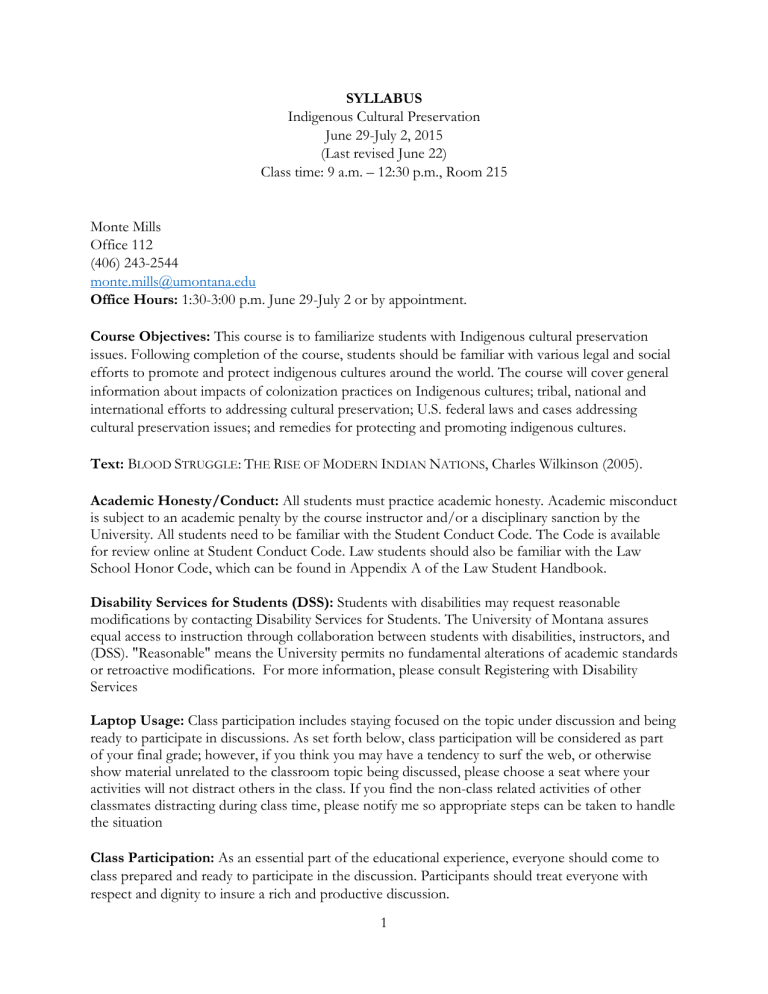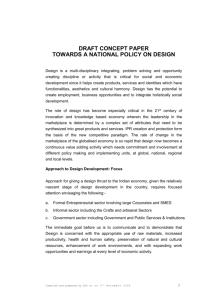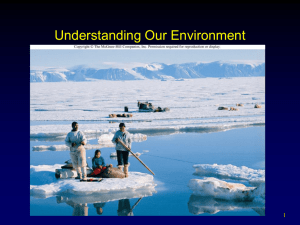Indigenous Cultural Preservation June 29-July 2, 2015 (Last revised June 22)

SYLLABUS
Indigenous Cultural Preservation
June 29-July 2, 2015
(Last revised June 22)
Class time: 9 a.m. – 12:30 p.m., Room 215
Monte Mills
Office 112
(406) 243-2544 monte.mills@umontana.edu
Office Hours: 1:30-3:00 p.m. June 29-July 2 or by appointment.
Course Objectives: This course is to familiarize students with Indigenous cultural preservation issues. Following completion of the course, students should be familiar with various legal and social efforts to promote and protect indigenous cultures around the world. The course will cover general information about impacts of colonization practices on Indigenous cultures; tribal, national and international efforts to addressing cultural preservation; U.S. federal laws and cases addressing cultural preservation issues; and remedies for protecting and promoting indigenous cultures.
Text: B LOOD S TRUGGLE : T HE R ISE OF M ODERN I NDIAN N ATIONS , Charles Wilkinson (2005).
Academic Honesty/Conduct: All students must practice academic honesty. Academic misconduct is subject to an academic penalty by the course instructor and/or a disciplinary sanction by the
University. All students need to be familiar with the Student Conduct Code. The Code is available for review online at Student Conduct Code. Law students should also be familiar with the Law
School Honor Code, which can be found in Appendix A of the Law Student Handbook.
Disability Services for Students (DSS): Students with disabilities may request reasonable modifications by contacting Disability Services for Students. The University of Montana assures equal access to instruction through collaboration between students with disabilities, instructors, and
(DSS). "Reasonable" means the University permits no fundamental alterations of academic standards or retroactive modifications. For more information, please consult Registering with Disability
Services
Laptop Usage: Class participation includes staying focused on the topic under discussion and being ready to participate in discussions. As set forth below, class participation will be considered as part of your final grade; however, if you think you may have a tendency to surf the web, or otherwise show material unrelated to the classroom topic being discussed, please choose a seat where your activities will not distract others in the class. If you find the non-class related activities of other classmates distracting during class time, please notify me so appropriate steps can be taken to handle the situation
Class Participation: As an essential part of the educational experience, everyone should come to class prepared and ready to participate in the discussion. Participants should treat everyone with respect and dignity to insure a rich and productive discussion.
1
Class Attendance: The American Bar Association requires attendance at all regularly scheduled class meetings. Attendance at all classes is required. Students who miss more than three hours must withdraw from the course as per the law faculty attendance policy. Students who come to class late or leave class early will receive a reduction on their Participation points as follows:
.5 Hour-1 Hour Unexcused Absence
1.5 Hours-2 Hours Unexcused Absence
2 Hours-3 Hours Unexcused Absence
3+ Hours Absence (Excused or Unexcused)
Grading Criteria:
Class Attendance ~ 10 points
Class Participation ~ 30 points
Final Examination ~ 60 points
5
10
20
Must drop
2
Monday, June 29:
Text:
B LOOD S TRUGGLE , Introduction and Part I – Abyss, pp. ix-88.
Cases:
Johnson v. M’Intosh, 21 U.S. 543 (1823).
Cherokee Nation v. Georgia, 30 U.S. 1 (1931).
Worcester v. Georgia, 31 U.S. 515 (1832).
U.S. v. Kagama, 118 U.S. 375 (1886).
Lone Wolf v. Hitchcock, 187 U.S. 553 (1903).
Statutes:
Antiquities Act 16 U.S.C. §§431-33.
Archaeological Resources Protection Act, 16 U.S.C. §§470aa-470mm.
Indian Arts and Crafts Act, 25 U.S.C. §§305-310 and 18 U.S.C. §1159.
Native American Language Act, 25 U.S.C. §§2901-06.
Esther Martinez Language Preservation Act, 42 U.S.C. §2991b-3.
Other materials:
Ghost Dance and Holy Ghost: the Echoes of Nineteenth-Century Christianization Policy in Twentieth-Century
Native American Free Exercise Cases, 49 S TAN .
L.
R EV . 773, 773-805 Sections I-II ONLY (Apr. 1997).
Sting in the Desert, Joe Mozingo, L.A. Times, available at http://graphics.latimes.com/utah-sting/
(September 21, 2014) (last visited June 18, 2015)
Topics:
Introductions
Syllabus and Expectations
Course Overview
Basics of Federal Indian Law: the Trust Responsibility and Plenary Power
Eras of Federal Indian Policy
Federal statutory bases for cultural preservation
3
Tuesday, June 30:
Text:
B LOOD S TRUGGLE , Part II – Last Stand, pp. 89-179; especially Chapter 4, The Making of a
Movement, pp. 89-112.
Aside from the text, Tuesday’s materials will be broken up by group as follows, with each group of three students responsible for reading the materials and presenting them to the class:
Group 1 (Religious Freedom Cases):
Lyng v. Northwest Indian Cemetery Protective Association, 485 U.S. 439 (1988).
Navajo Nation v. U.S. Forest Service, 535 F.3d 1058 (10th Cir. 2008).
Burwell v. Hobby Lobby Stores, Inc., 134 S.Ct. 2751 (2014).
Group 2 (Eagles):
U.S. v. Friday, 525 F. 3d 938 (10th Cir. 2008).
U.S. v. Hardman, 297 F.3d 1116 (10th Cir. 2002)
U.S. v. Wilgus, 638 F.3d 1274 (10th Cir. 2011)
Group 3 (Sacred Sites follow-up and Dussias conclusion):
National Historic Preservation Act, 54 U.S.C. §§302701-706; 306108.
Executive Order 13007, Indian Sacred Sites (May 24, 2996).
Dussias, 49 S TAN .
L.
R EV . 805-52
Group 4 (Intellectual Property):
Pro-Football, Inc. v. Blackhorse, ___ F.Supp. 3d ___, 2014 WL 6682640 (E.D. Va. 2014).
Hornell Brewing Co. v. Rosebud Sioux Tribal Court, 133 F.3d 1087 (8th Cir. 1998).
Kevin R. Blackistone, Washington Football Fans are as Guilty of Cultural Appropriation as Rachel Dolezal,
Washington Post, J UNE 19, 2015, available at http://www.washingtonpost.com/sports/redskins/washington-football-fans-are-as-guilty-ofcultural-appropriation-as-rachel-dolezal/2015/06/19/48e20216-1688-11e5-9518f9e0a8959f32_story.html
(last visited June 22, 2015).
Group 5 (Riley Article):
Angela R. Riley, ‘Straight Stealing’: Towards an Indigenous System of Cultural Property Protection, 80 W ASH .
L.
R EV . 69 (2005).
Skim the Ft. Peck Cultural Resource Protection Ordinance, http://www.fptc.org/ccoj/title_32/title_32.html
Group 6 (Culture in the Courts - The Navajo Election):
Navajo Courts and Navajo Common Law: A Tradition of Tribal Self-Governance, Raymond D.
Austin (2009), Introduction and Chapter 2, pp. xvii-xxiv and 37-52.
Opinion, Tsosie v. Deschene/Whitethorne v. Deschene, SC-CV-57-14/SC-CV-58-14, Navajo
Nation Supreme Court (October 8, 2014 nunc pro tunc to September 26, 2014).
4
Topics:
Religious Freedom
IP issues
Riley article
Culture in the Courts – the Navajo Election
5
Wednesday, July 1:
Text:
B LOOD S TRUGGLE , Part III – Foundations for Self-Determination, pp. 177-268.
Cases:
Thorpe v. Borough of Jim Thorpe, 770 F.3d 255 (3d Cir. 2014).
U.S. v. Corrow, 119 F.3d 796 (10th Cir. 1997).
U.S. v. Tidwell, 191 F.3d 976 (9th Cir. 1999).
Bonnichsen v. U.S., 367 U.S. 864 (9th Cir. 2004).
Statutes and Regulations:
Native American Graves Protection and Repatriation Act (“NAGPRA”), 25 U.S.C. §§ 3001-3013.
NAGPRA Regulations, 43 C.F.R Part 10.
Other Materials:
U.S. v. Washington, 43 ELR 20071, No. 70-9213, (W.D. Wash., 03/29/2013) (Martinez, J.)
Tribes Seek Greater Clout, Daily Herald (Everett, WA), October 22, 2006, available at http://www.heraldnet.com/article/20061022/NEWS01/610220769 (last visited June 17, 2015).
Badger-Two Medicine:
Blackfeet Battle Oil & Gas Developer for Sacred Badger-Two Medicine Origin Site, Terri Hansen, Indian
Country Today Media Network.com, http://indiancountrytodaymedianetwork.com/2014/11/12/blackfeet-battling-oil-gas-developersacred-badger-two-medicine-origin-site-157808?page=0%2C0 , (Nov. 12, 2014) (last visited June 16,
2015).
Letter to Secretary of the Dept. of the Interior Sally Jewell and Secretary of the Dept. of Agriculture
Tom Vilsack from Blackfeet Tribal Business Council, October 24, 2014.
Letter to President Barack Obama from Chief of the Blackfeet Nation Earl Old Person, March 19,
2015.
Memorandum of Points and Authorities in support of Plaintiff’s Motion for Summary Judgment,
Solonex LLC v. Jewell, U.S. District Court for the District of Columbia, Case No. 13-993-RJL (filed
July 7, 2014).
Brief of Amicus Curiae Blackfeet Tribe of the Blackfeet Indian Reservation in Support of Defendants’
Cross Motion for Summary Judgment and Opposition to Plaintiff’s Motion for Summary Judgment,
Solonex LLC v. Jewell, U.S. District Court for the District of Columbia, Case No. 13-993-RJL (filed
September 2, 2014).
DC Judge Questions ‘Kafkaesque’ 30-Year Drilling Delay, Michael Macagnone, Law 360, http://www.law360.com/articles/666194/dc-judge-questions-kafkaesque-30-year-drilling-delay ,
(June 10, 2015) (last visited June 16, 2015).
6
NAGPRA:
Native American Graves Protection and Repatriation Act (NAGPRA): A Quick Guide for Preserving Native
American Cultural Resources, American Indian Liaison Office, National Park Service, U.S. Dept. of the
Interior (Draft 2012)
“Seeking Stars, Finding Creationism”, George Johnson, Raw Data, Page D3, New York Times,
October 20, 2014, available at http://nyti.ms/1Fthny2 (last visited June 16, 2015).
The Ancestry and Affiliations of Kennewick Man, Rasmussen, Sikora, et al., N ATURE , available at http://www.nature.com/nature/journal/vnfv/ncurrent/full/nature14625.html
(published online
June 18, 2015).
Hopi Katsina Friends letters/press release
Topics:
Treaty rights in action
Land-based challenges
Badger-Two Medicine
NAGPRA
The Saga of Jim Thorpe
Science v. Culture? (Kennewick Man)
Criminal Protections
Hopi Katsina Friends
AMENDED:
CRIT Solar Project
Oak Flat
Mauna Kea
National Park Service Gathering Rule
NAGPRA:
Kennewick Man and Science v. Culture?
Criminal Protections
Hopi Katsina Friends
Additional topics:
Mauna Kea and TMT:
Portion of Appellants opening brief on appeal relating to cultural impacts http://www.washingtonpost.com/news/morning-mix/wp/2015/06/30/how-a-hawaiianmountaintop-became-a-battleground-between-native-activists-and-astronomers/ http://indiancountrytodaymedianetwork.com/2015/06/30/sacred-mountain-blockade-protectorshalt-construction-mauna-kea-160902
CRIT Solar Project Challenge:
Memorandum of Points and Authorities in Support of Motion for Preliminary Injunction, Colorado
River Indian Tribes v. U.S. Dep’t. of the Interior, Case No. 5:14-cv-02504-JAK-SP, U.S. District
Court for the Central District of California, Eastern Division (March 13, 2015).
7
Order Denying Plaintiff’s Motion for Preliminary Injunction, Colorado River Indian Tribes v. U.S.
Dep’t. of the Interior, Case No. 5:14-cv-02504-JAK-SP, U.S. District Court for the Central District of California, Eastern Division (June 11, 2015).
Oak Flat:
The Southeast Arizona Land Exchange and Conservation Act, website of Rep. Paul Gosar, http://gosar.house.gov/southeast-arizona-land-exchange-and-conservation-act (last visited June 16,
2015). http://indiancountrytodaymedianetwork.com/2015/06/17/we-want-talk-resolution-copper-breakssilence-over-land-swap-160750
Section 3003 of the National Defense Authorization Act of 2014, passed December 19, 2014.
H.R. _______, The Save Oak Flat Act.
National Park Service Proposed Gathering Rule:
Plant Harvest Threatens National Park Resources, http://www.peer.org/news/news-releases/plantharvest-plan-threatens-national-park-resources.html.
Gathering of Certain Plans or Plant Parts by Federally Recognized Indian Tribes for Traditional
Purposes, 80 Fed. Reg. 21674 (April 20, 2015).
Complaint, Public Employees for Environmental Responsibility v. Nat’l Park Svc., Case No. 15-cv-
00853, U.S. District Court for the District of Columbia (June 9, 2015).
NAGPRA:
Letter from Governor Inslee to US Army Corps of Engineers.
8
Thursday, July 2:
Text:
B LOOD S TRUGGLE , Part IV – Reviving the Homeland and Coda – The Outlook, pp. 271-383, especially Chapter 14 – Preserving the Old Ways, 352-383.
Other Materials:
Jeremie Gilbert, Indigenous Rights in the Making: The United Nations Declaration on the Rights of Indigenous
Peoples, 14 Int’l. Jour. On Minority and Group Rights 207 (2007).
United Nations Declaration on the Rights of Indigenous Peoples, adopted by the U.N. General
Assembly, Sept. 13, 2007, G.A. Res. 61/295.
Announcement of U.S. Support for the United Nations Declaration on the Rights of Indigenous
Peoples, Initiatives to Promote the Government-to-Government Relationship & Improve the Lives of Indigenous Peoples, December 17, 2010, available at http://www.state.gov/documents/organization/184099.pdf
(last visited June 16, 2015).
Outcome Document of the High-Level Plenary Meeting of the General Assembly Known as the
World Conference on Indigenous Peoples, adopted by the U.N General Assembly, September 22,
2014, G.A. Res. 69/2.
Cal et al. v. Attorney General, Claims nos. 171 &172 of 2007, Belize S. Ct. Judgment of October 18,
2007.
Introduction, Honouring the Truth, Reconciling for the Future, Summary of the Final Report of the
Truth and Reconciliation Commission of Canada, pp. 1-27 (2015).
Truth and Reconciliation Commission of Canada: Calls to Action, pp. 1-11 (2015).
When Will U.S. Apologize for Boarding School Genocide, Mary Annette Pember, Indian Country Today
Media Network.com, available at http://indiancountrytodaymedianetwork.com/2015/06/19/whenwill-us-apologize-boarding-school-genocide-160797 (June 19, 2015).
Topics:
Guest Speaker: Christopher Foley, Staff Attorney, Indian Law Resource Center
International Indigenous Cultural Preservation:
UN Declaration on the Rights of Indigenous Peoples
Truth and Reconciliation Commission of Canada
Non-Profit/NGO Development
Wrap-up
9







